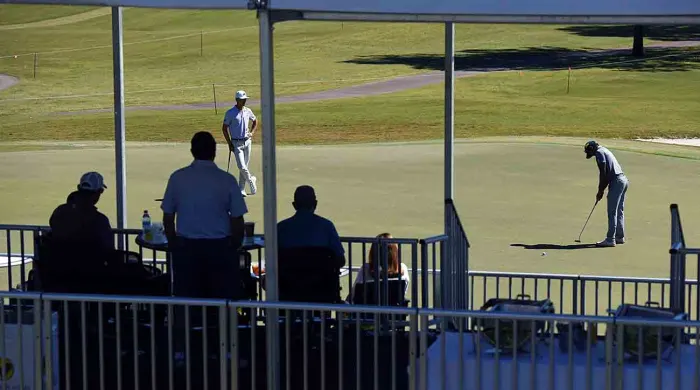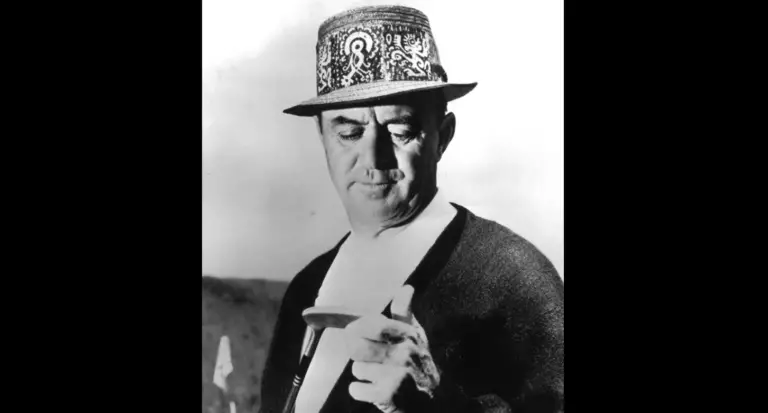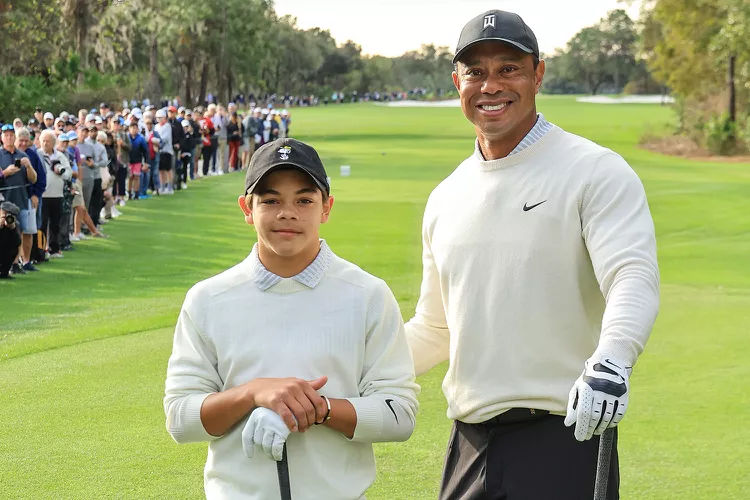Fall PGA Tour Golf Isn’t Going Away, But It Should Be 54 Holes and No Weekends

Authored by BOB HARIG via SI.com
For this installment of Bad Takes Week, Bob Harig has a radical solution for the sleepy part of the PGA Tour season.
Welcome to SI Golf’s Inaugural Bad Takes Week, where our writers and editors have been asked to offer their worst ideas and defend them. These are columns on takes they believe in, even if they made the rest of the room groan during the pitch meetings. Keep an eye out for more bad takes throughout the week.
The evidence is more than anecdotal. There are TV ratings numbers that back up the fact that very few people, even strident followers of golf, are paying attention in the fall.
As a commercial product, the months September through November and even into December need something spectacular to occur in order to get any kind of numbers in front of a TV to watch a PGA Tour event.
The Ryder Cup, which is played with PGA Tour and DP World Tour players, is one example. So might be a Tiger Woods sighting. Aside from that … crickets. And even the golfers who are competing in these tournaments are spending their free time watching football.
That’s why the PGA Tour should stage its FedEx Fall events across three days and end them on Friday.
It’s an admittedly ludicrous idea given what we know about the Tour. The mocking of LIV Golf and it’s 54-hole events would alone make this impossible. The Tour isn’t going that route after chiding LIV for so long. But even without that easy reason to dismiss, the Tour has simply taken a hard line on playing 72-hole events.
The Tour’s rules require every effort be made to finish four rounds; there has not been a 54-hole official event since the 2016 Zurich Classic. The quest to play 72 holes is admirable and understandable.
But there are practical matters in play as well. The Tour is also a commercial product that wants to maximize exposure and give title sponsors value. It’s hard to see that occurring now when roughly 150,000 people watched the final round of the Shriners Children’s Open won by Tom Kim; Fox’s national NFL game that afternoon had more than 26 million viewers.
Nielsen didn’t even list Saturday figures for the event, which was going up against more than 20 college football games.
Golf has been such a hard sell in the fall that the PGA Tour managed to convince the PGA Championship to move its major from August to May—with not always the best results—so it could move up its FedEx Cup playoff schedule and finish in August prior to Labor Day and the college football/NFL death trap. In the process, the Tour also moved the Players Championship from May back to March. These decisions were not made lightly.

Then it went so far as to change its wraparound scheduling system in place for more than 10 years to start in 2024 with a calendar-year schedule that will see the FedEx Cup season start at the Sentry in Hawaii and end at the Tour Championship in August. Good idea.
It’s been argued many times that the PGA Tour should not play at all in the fall to give fans a chance to miss the sport.
But that won’t happen, either, because the Tour is also about playing opportunities for its members and giving charitable dollars to the communities that host the events.
So what to do with the fall? The Tour came up with a sound idea to make the seven events being staged through the RSM Classic meaningful. For those who finished outside of the top 50 in FedEx Cup points, there is an opportunity improve your spot by finishing 51 to 60, thus getting two early-season starts in signature events in 2024.
It is also the place for those whose jobs are not secure to take care of business. Those who missed the playoffs in August were not losing their PGA Tour cards. These events are an opportunity to battle for the top 125 positions. Instead of earning points at the beginning of the wraparound season—which always rankled the top players who wanted time off—now you do it at the end of the year, with slate wiped clean in January.
But to give these events some juice, give sponsors a break and maybe a chance of getting eyeballs, why not start on Wednesday and end on Friday? Three of the events are played in the Pacific time zone which means prime time viewing in the east, a bonus for golf fans during the week. There is a Midwest event, one in Japan and two in the Eastern time zone, which make for difficult viewing but can still be seen on tape delay when you know a winner will be crowned on Friday night.
The schedule this year saw two open weeks following the Tour Championship before the Fortinet Championship was played in Napa, Calif. Then another week off for the Ryder Cup. Then three straight weeks concluding with the Zozo Championship in Japan before an off week and then three more to end the year.
In theory, with a shorter work week, you could perhaps even squeeze in another event to offer one more playing opportunity. You could play a pro-am on Tuesday and still have a 36-hole cut after Thursday’s round. You’d have less infrastructure costs as well as fewer volunteer commitments, perhaps giving sponsors a financial break.
That might mean lowering the purse, but so be it. The fact that many of these events pay as much as tournaments that are staged during the regular part of the year is a tribute to Tour arm-twisting. It’s hard to imagine anyone getting upset about playing for less when we’re talking about millions anyway. The points are the same, and that’s what matters.
Then there’s the biggest issue of all: following the conclusion of the tournament, players have the weekend off to watch football like the rest of us.
What do you think of our Bad Takes? Got one of your own? Email your feedback here (include name and hometown) and we’ll publish the best next week.








Leave feedback about this
You must be logged in to post a comment.